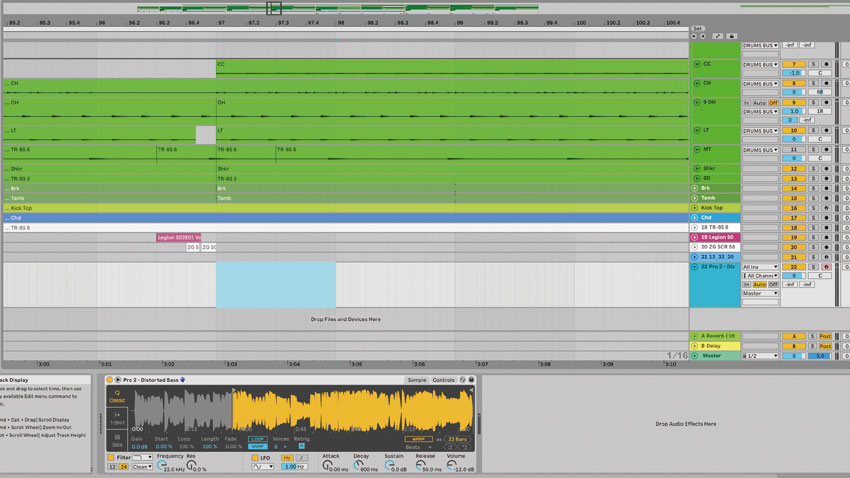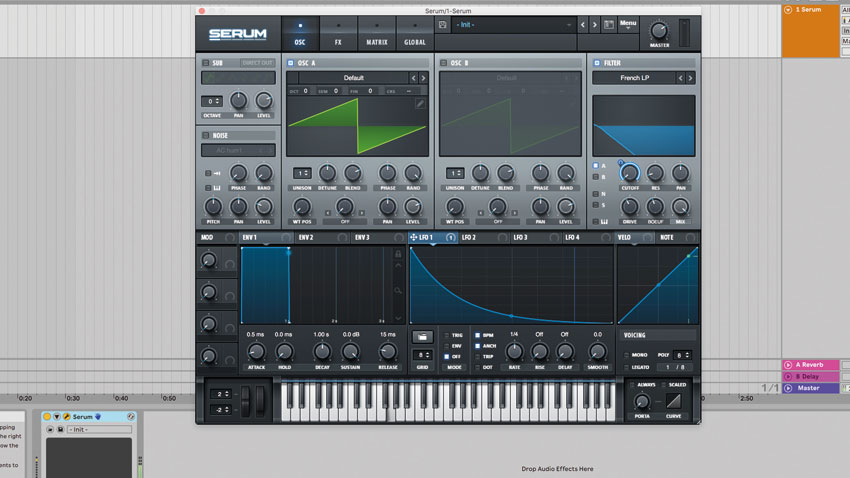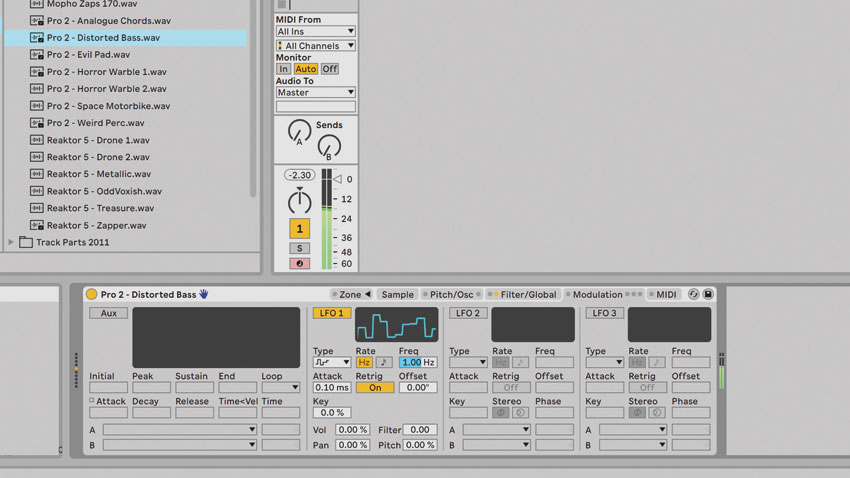6 surefire ways to up your bassline production game
Your low-end sounds need not be limited to the very bass-ics. Try some of these innovative techniques…

A good bass sound is fundamental to any dance music track, so if yours isn't cutting the mustard, dig into these synthesis- and sampling-based sound design tips and techniques for instant inspiration.
For more sound design tips, get the February 2019 edition of Future Music.

1. Transpose for lows
Those cheese-tastic midrange stabs and high-pitched synth hits you hear in sample packs can quite easily become gnarly, weighty bass notes once transposed down to a suitable range via your DAW or sampler’s tuning controls. What’s more, the artefacts imparted by this extreme transposition will give your bass a particular timbre that’s hard to achieve any other way.

2. Royal rumble
When paired with a four-to-the-floor kick drum, any segment of ‘rumble’ can become a thunderous techno bassline. Chop a chunk out of a field recording, then sidechain the signal against that kick for instant warehouse vibes. Alternatively, swamp a 16th-note bass drum pattern in reverb, then resample it and chop up the audio to create your own cavernous, atonal sub-bass fit for a Berlin rave.

3. Pitch switch
When designing a deep bass sound using a hardware synth (or softsynth assigned to a MIDI controller), try sweeping the pitch control by hand as you record the signal to a new audio file. These smooth but unexpected tuning changes will inspire bass rises and falls that you’d never think of playing in via MIDI. Cut the audio up into chunks, then replay those pitching ‘wobs’ back using a sampler for unique bass ‘bumps’ and edit sections.

4. Tremolo show
For instant jungle-style sub bass, run a pure sine wave into a saturation plugin. This distortion will be static, however - until you place a tremolo plugin pre-saturator! As you might guess, this will smoothly fluctuate the level of the sine before it enters the drive stage, creating a pleasant ‘wavering’ effect. Sit your brand new wobble bass under a breakbeat and you’ll have made yourself the basics of a classic rave tune!

5. Throwing shapes
Assign a synth’s LFO to modulate filter cutoff, set the LFO waveform to a downwards saw, then play around with low cutoff and high resonance values. If your synth’s filter is particularly meaty, this will create a snappy ‘pluck’ as the LFO clamps down on the waveform. This works best if your synth features malleable envelopes (à la Serum), as you can really bend the LFO’s curve to taste.
Want all the hottest music and gear news, reviews, deals, features and more, direct to your inbox? Sign up here.

6. Sampler drama
When creating a new bassline, try this creative tip. Begin by recording 5-10 minutes of synth ‘noodling’ to audio, tweaking the sound’s timbre as you go. Once done, throw the audio into a sampler, then trigger it with a basic MIDI pattern. Modulate the sample start position with a random-shaped LFO. Playback will jump around your long sample, outputting unique timbral switches and glitches.
Future Music is the number one magazine for today's producers. Packed with technique and technology we'll help you make great new music. All-access artist interviews, in-depth gear reviews, essential production tutorials and much more. Every marvellous monthly edition features reliable reviews of the latest and greatest hardware and software technology and techniques, unparalleled advice, in-depth interviews, sensational free samples and so much more to improve the experience and outcome of your music-making.
